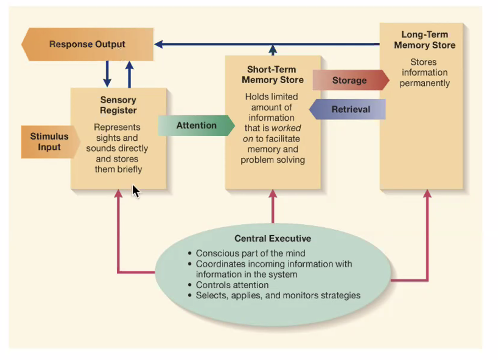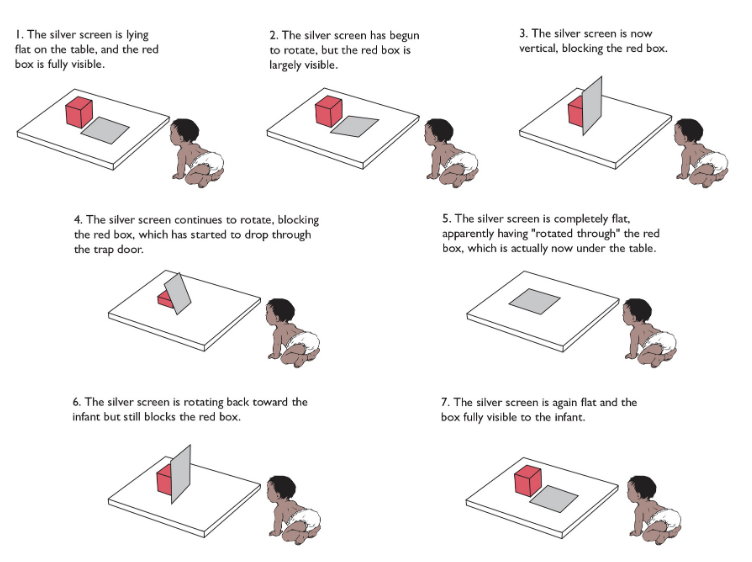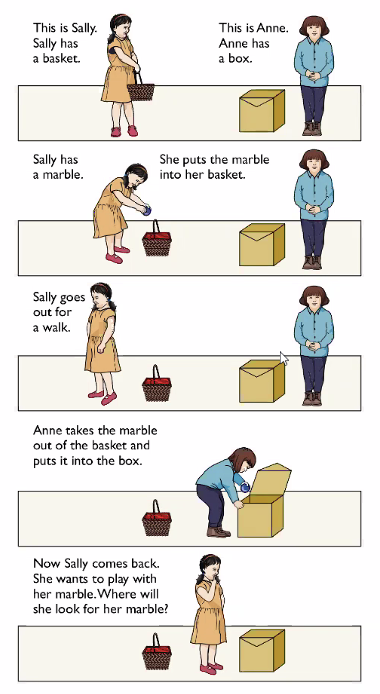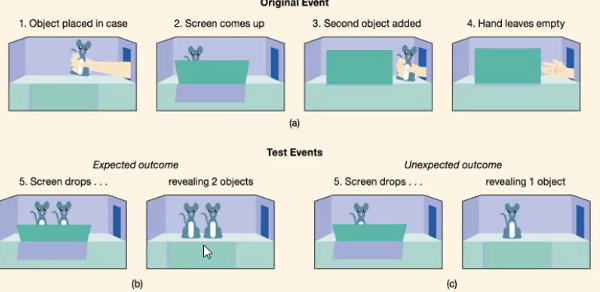Lecture 03 - Theories of Cognitive Develop
1/58
There's no tags or description
Looks like no tags are added yet.
Name | Mastery | Learn | Test | Matching | Spaced |
|---|
No study sessions yet.
59 Terms
What did Piaget believe about children?
‘child is active in his/her cognitive development’
metaphor of child scientist
Children are naturally curious and create theories about how the world works
What are children schemas?
mental structures or concepts in the child’s mind
How do schemas influence our world and perception of it?
schemas:
influence what we pay attention to
impact how quickly people learn
simplify the world
allow us to think quickly
change how we interpret incoming info
Can schemas be difficult to change?
yes!
What are 4 types of schemas that we have give an example.
for people (behaviours, preferences)
social schemas (‘be respectful’)
self-schemas (how you see yourself)
event schemas (handshake, professionalism)
What is the schema triple A?
adaptation
assimilation
accommodation
What is schema adaptation?
building schemas through direct interaction with environment
What is schemas assimilation?
using current schemas to interpret the external world
What is schema accommodation?
adjusting old schemas and creating new ones to better fit environment
Give schema example of child liking to bang things on table:
babies have favourite scheme of banging things on table to explore objects (adaptation)
baby tries banging new item: a cup (assimilation)
baby tries banging new item: egg and it breaks (accommodation)
What are Piaget’s four stages of Cognitive Development? With ages:
sensorimotor → birth-2 years
pre-operational → 2-7 years
concrete operational → 7-11 years
formal operational → 11-15 years
What is sensorimotor stage?
infant progresses from reflexive instinctual action at birth to beginning of symbolic thought
infant constructs an understanding of the world by coordinating sensory experiences with physical actions
What is pre-operational stage?
child begins to represent world with words and images
words/images reflect increased symbolic thinking and go beyond sensory info and physical action
e.g. child can navigate miniature model of spaces
What is the concrete operational stage?
child can now reason logically about concrete event (not hypothetical)
can classify objects into sets
e.g. these are all vegetables
What is formal operational stage?
adolescent reasons in more abstract and logical ways
thought is more idealistic
How many substages are there of sensorimotor stage?
6 substages
What is substage 1: Simple reflexes
Simple reflexes
first month
reflexes that determine infant’s interactions with the world are at centre of cognitive life
e.g. sucking reflex causes infant to suck on anything placed at lips
What is substage 2: First habits and primary circular reactions?
from 1-4 months
infants begin to coordinate what were separate actions into single, integrated activities
e.g. combine grasping an object with sucking on it
What is substage 3: Secondary circular reactions?
from 4-8 months
infants might take major strides in shifting cognitive functions beyond themselves and begin acting on outside world
e.g. child picks up rattle and shakes it in different ways to see how sound changes
modifying cognitive scheme about shaking rattles
What is substage 4: Coordination of secondary circular reactions?
from 8-12 months
infants begin to use more calculated approaches
coordinate several schemes to generate single act
achieve object performance
e.g. infant will push one toy out of way to reach another toy that is lying partially exposed under it
What is substage 5: Tertiary circular reactions
from 12-18 months
infants develop deliberate variations of action that bring desirable consequences
infants carry out miniature experiments to observe consequences
e.g. child drops toy repeatedly, varying position to observe where it falls each time
What is substage 6: Beginnings of thought?
from 18 months-2 years
capacity for mental representation or symbolic thought
infants can imagine where objects that they cannot see might be
e.g. if ball rolls under couch, infants can figure out where it is likely to emerge
What do infants believe about object permanence at 1-4 months?
infants believe that objects no longer exist when they disappear from view
What is object permanence?
understanding that objects exist independently of oneself and one’s actions
aka start to know that objects still exist even if they disappear from view
this is why before this age, children love peak-a-boo
What is the A-not-B experiment in child development, and what does the A-not-B error show?
Task: Toy is repeatedly hidden at A, then hidden at B while infant watches.
Infants often still reach to A → A-not-B error.
Shows developing object permanence
What is a key criticism of Piaget’s account of sensorimotor thought (object permanence)?
Object permanence may develop earlier than Piaget proposed, and performance depends on task design
In Piaget’s hidden object task, what factors improve infant success?
Shorter delay between hiding and searching, and containers that are easy to distinguish
What did Baillargeon’s possible vs. impossible event studies show?
At 4.5 months, infants look longer at impossible events, suggesting surprise and earlier object knowledge
What did the Violation of Expectancy (carrot) experiment demonstrate?
Infants looked longer when the tall carrot did not appear in the window (unexpected event), showing early understanding of object permanence
What are ‘children’s theories’?
children have naive theories about things
these develop in order for them to understand the world
What is children’s naive physics (3-4 months) theory?
object cannot go through walls
objects move along continuous paths
What is children’s naive physics (6 month) theory?
objects move when collided with
What is children’s naive biology theory? BUT what might they believe about computer virus?
only animate objects eat and drink (dolls can’t!)
But they still may think a computer is sick with virus, until they understand difference between biological virus and computer virus
What was Vygotsky’s Theory?
children’s development is a result of social interaction and cultural context
these are inseperable
What is the zone of proximal development?
the difference between what someone can do alone and with help from someone else
What is scaffoling?
teaching style that matches assistance to learner’s needs
What is private speech?
Out-loud self-talk used to regulate one’s own behaviour
What is inner speech?
The internalized form of private speech
Vygotsky’s term for thought
What are the basic features of info-processing theory?
people and computers are both symbol processors
mental hardware = sensory, working, long-term memory
BRAIN AS COMPUTER
What is the general flow of information through the memory system (according to the information processing model)?
Stimulus input → Sensory register → Attention → Short-term memory → Storage → Long-term memory → Response output

What is the sensory register, and how long does it last?
Sensory memory that lasts only a few seconds; we select certain info to attend to
What are some types of sensory memory?
echoic (sound), iconic (visual - sparklers), haptic (touch)
What is working memory?
Memory that lets us hold and use information while doing something else
limited time and info
What is the role of the central executive in memory?
It is the conscious part of memory; decides what to remember and directs attention
How is the brain compared to a computer in information processing models?
Input devices = sensory input
RAM = working memory
CPU = central executive (directs and manipulates info)
Storage = long-term memory
What are the core knowledge theories?
much knowledge is general
there are distinctive domains of knowledge and some acquired early in life
some forms of knowledge are so important to survival that learning them is simplified
children rapidly acquire language and knowledge of objects, living things, peopel
Do babies understand objects earlier than Piaget proposed?
yes
infants rapidly create reasonably accurate theories of some basic properties of objects
they form categories to organize objects by properties and function
What was Baillargeon’s experiment with showing possible /impossible events with a physical object?
testing objects permanence in young infants

What do infants and toddlers use to discriminate/identify animate objects?
motion
In preschool years (age 4), what naive biology theories do children understand?
movement
growth
internal parts
inheritance
illness
healing
What is their understanding of inheritance?
they learn that kids look like their parents
What are two key concepts in children's understanding of living things?
Teleological Explanations – Children believe living things and their parts exist for a purpose (e.g., "Birds have wings to fly")
"Teleological" means purpose-driven
Essentialism – Children believe that all living things have an underlying essence that makes them what they are (e.g., a dog has a "dog-ness" that defines it)
Why does it take children longer to realize that plants are living?
They think about characteristics of living things but plants don't always fit in so obviously
What is folk pscyhology?
informal beliefs about other people and their behaviour
'Why is he doing this? Because he is this way'
When do children show increasing theory of mind? What is theory of mind?
Understanding that people have different desires
Understanding that behaviour is based on a person's beliefs even when those beliefs are wrong
Understanding that people may feel one emotion but show another
develops between 2-5
Who helps with development of children’s theory of mind?
parents
Parents say: "I can see you're thinking about it"
Parents say "I can see that you're very sad" (Oh! That’s what feeling sad is)
What is metacognition?
thinking about your own cognition/thinking
What is the Sally Anne task and what does it show?
demonstrates if the child has achieved theory of mind
If child has achieved theory of mind they will say in the basket
You have to put yourself in the mind of a child
Take a perspective of Sally
Children start doing this at about 4-5 years old
Precursor to empathy later on

At what age do children have a naive understanding of math?
at 5 years old
children are surprised when screen drops and there’s only one mouse
